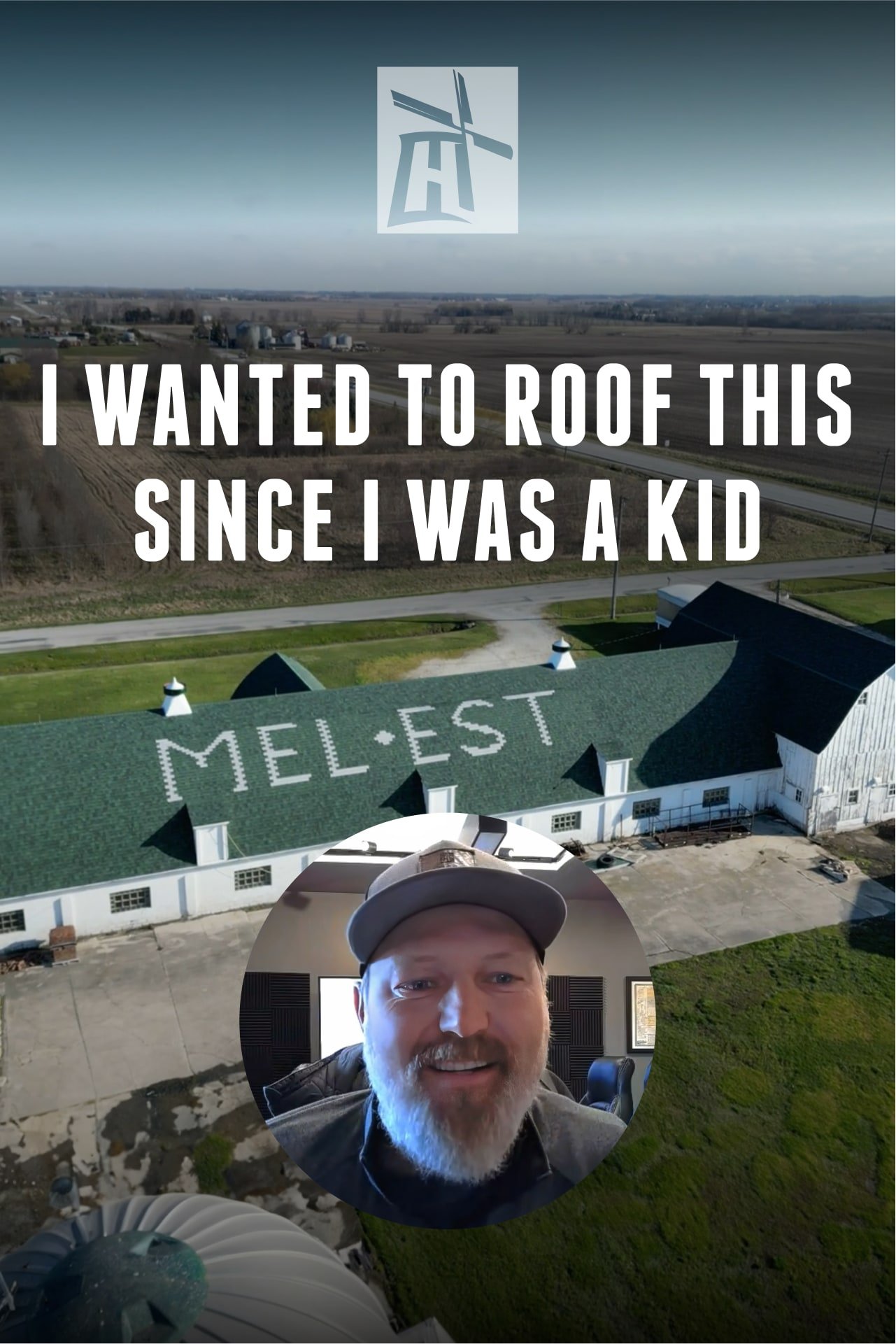I Wanted To Do This Since I Was A Kid
Alright, let's dive into how we embedded letters into this roof, a project that proved to be quite the undertaking from the outset.
We started by stripping the roof down to its bare essentials, laying down all the underlayment, and then deliberately leaving out a specific area—shaped like a square or rectangle—where those letters were destined to go. The real work began with tape measures and spray paint in hand, meticulously marking out the exact placement for each letter.
Our choice of architectural shingles presented a unique challenge. Given their 1-meter width, we had to ensure the vertical leg of any letter did not exceed 1ft in width, requiring us to cut each shingle into smaller pieces. These pieces were then staggered as we progressed upward to maintain the roof's watertight integrity.
The planning for the horizontal and vertical elements of the letters involved precise calculations. We decided that every horizontal segment would stretch to 2 meters in width, and the vertical ones would stand at about 17ft tall. However, crafting an 'S' proved exceptionally tricky due to its complex shape, necessitating a bottom-up approach in shingle placement. This method complicated understanding the middle section of the 'S'. Furthermore, while constructing the 'T', I overlooked the space needed for its horizontal bar, resulting in a misalignment that forced us to dismantle and restart the entire segment.
This process wasn't just about laying shingles; it entailed a blend of geometry, mathematics, and artistry, all while ensuring the final product was watertight.
Compared to the original method, which used three-tab shingles for their convenience in creating vertical lines, our approach required a more intricate integration of the letters with the roofing material. The older three-tab shingles, while easier to work with, are less durable against high winds, which led us to opt for the sturdier architectural shingles, capable of withstanding up to 130 mph winds.
I've been eyeing this barn since my childhood, always dreaming of embarking on such a project. When the opportunity finally arose, my team and I spent countless hours around the coffee table, debating the best approach before arriving at a viable solution. The result? A landmark creation that even assists local pilots in navigation.
It was a rigorous two-week endeavor for me personally, after which I passed the baton to my team to complete the opposite side.
Despite my current role as president of the company, this project was a personal dream, one I couldn't pass up. It was a testament to our team's dedication and skill, proving that even the most challenging tasks could be mastered with the right blend of creativity and perseverance.

